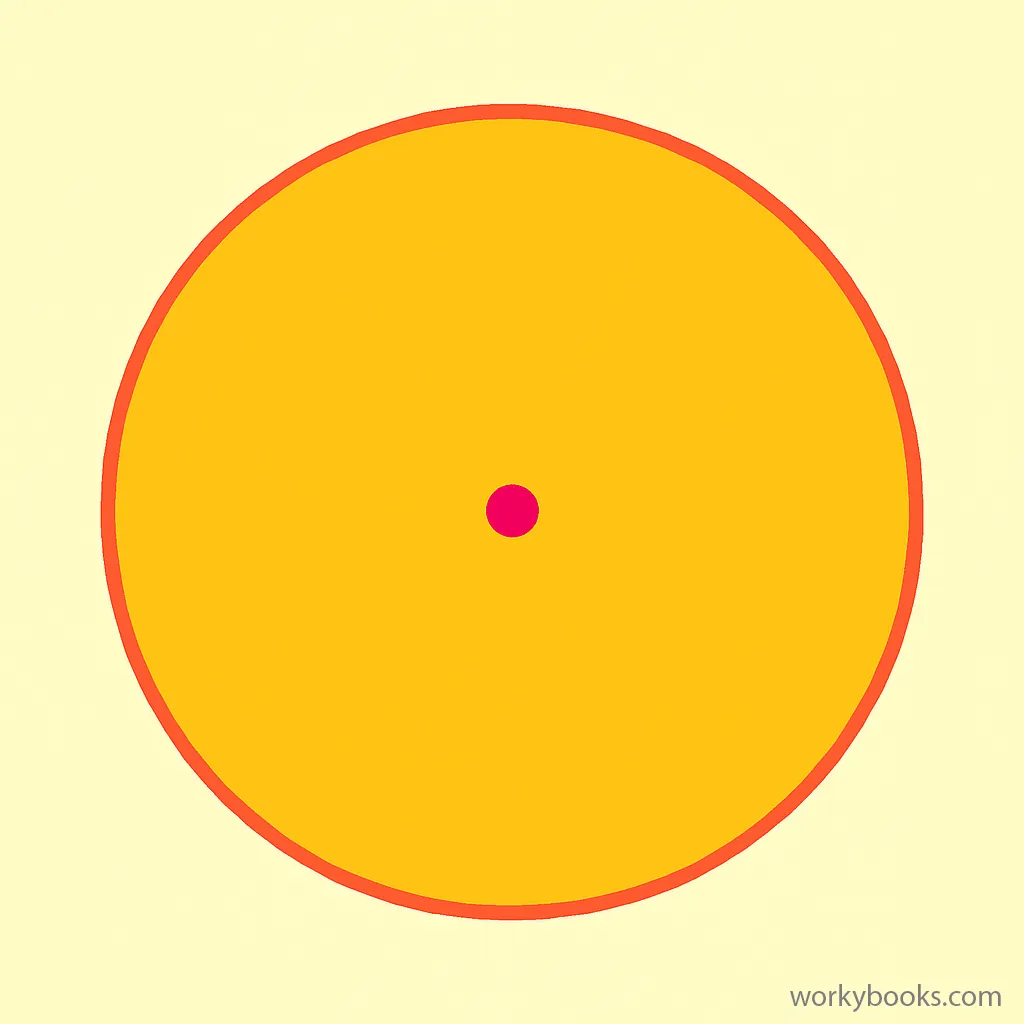Parts of a Circle - Definition, Examples, Quiz, FAQ, Trivia
Understanding Circle Geometry and Its Components
What is a Circle?

A circle is a special round shape where every point on its edge is exactly the same distance from the center. Think of it like a perfectly round cookie or the face of a clock!
Circles are all around us in everyday life - from coins and wheels to pizzas and buttons. Understanding circles helps us understand many things in our world.
Math Fact!
The word "circle" comes from the Greek word "kirkos" which means "ring" or "hoop".
Parts of a Circle

Circles have several important parts that help us describe and measure them. Let's learn about each part:
Remember This!
Diameter = 2 × Radius. If you know the radius, you can always find the diameter by multiplying by 2!
Examples of Circle Parts in Real Life

Circle parts are everywhere in our daily lives! Here are some examples:
Wheels
The spoke is the radius, and the distance across is the diameter.
Pizza
Each slice is a sector, and the crust is the circumference.
Clock
The hour hand is a radius, and the numbers are on the circumference.
Rainbow
A rainbow is a beautiful example of an arc.
Cookies
A cookie with a bite taken out shows a segment of a circle.
Next time you see something round, try to identify its different parts. You'll be surprised how often you find circles in your daily life!
Did You Know?
The ratio of a circle's circumference to its diameter is always the same number, called Pi (π), which is approximately 3.14.
Circle Parts Quiz
Test your knowledge with this quiz! Answer all 5 questions to see how much you've learned about circle parts.
Frequently Asked Questions
Here are answers to some common questions about circles:
Math Facts About Circles
Discover some fascinating facts about circles and their parts!
The Mystery of Pi
Pi (π) is an irrational number, which means its decimal representation goes on forever without repeating. Computers have calculated Pi to over 50 trillion digits!
The Invention of the Wheel
The wheel is one of humanity's most important inventions, and it's based on the circle. The earliest known wheels date back to around 3500 BC in Mesopotamia.
Circles in Nature
Circles appear frequently in nature - from the cross-section of tree trunks to the shape of planets and stars. Even water ripples form concentric circles!
Ancient Circle Knowledge
Ancient Egyptians knew about the relationship between a circle's diameter and circumference as early as 1650 BC, though they used a slightly different value for Pi (3.16).


